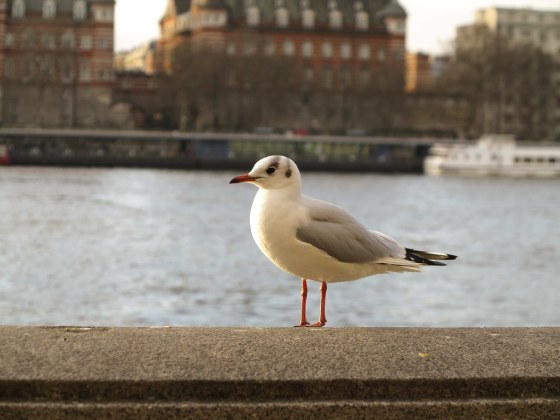City Critters bills itself as a fine general introduction to a natural world that is often ignored. In her general introduction Russell covers sparrows, starlings, pigeons, seagulls, mice, rats, squirrels, earthworms, and house pests. Each chapter provides an overview of the creature’s presence in the city, how it came to be there or to adapt to life in the city, as well as its habitats and mating habits. Russell also looks at the various methods used to control these “pests”. She seems to be in favour of measures to limit their numbers, but she also recognises the value they bring to the city and doesn’t want them to be eliminated completely. Not only do many of these species provide people with pleasure, but they (and we) are also interrelated:
Continue reading “City Critters by Helen Ross Russell”Tag: urban nature
Hunting Big Game in the City Parks by Howard G. Smith
This wonderfully titled book is a field guide to hunting for insects in the urban environment. Each chapter focuses on two or three species and the chapters have equally wonderful titles: The Tyrannosaurus Rex of the Flower Garden, Ruthless Bandit Kings and Hungry Tigers, Man-Eating Kangeroos and Music-Playing Warriors. With a keen sense of curiosity and wonder and a lot of patience Smith explores urban parks, swamps and his own back garden to uncover the often hidden and rarely seen lives of wasps, bees, ants, grasshoppers and beetles, amongst others. His adventures are beautifully illustrated by Anne Marie Jauss.
Continue reading “Hunting Big Game in the City Parks by Howard G. Smith”The Natural History of a Yard by Leonard Dubkin
In The Natural History of a Yard Leonard Dubkin provides his observations on the natural life of his yard in Chicago over the course of three summers. Dubkin describes the yard thus:
…a little plot of grass bordered by a privet hedge. A high iron fence separates the yard from Sheridan Road… Just behind the iron fence on either side of the driveway is a forsythia bush, and in the rear of the yard, before the entrance to the hotel, is a tall, stately elm tree. That is really all there is to it.

However, through Dubkin’s probing and close attention, we are shown that there is in fact much more to the yard than that. We meet a whole cast of characters – Dubkin’s daughter Pauline, Emil the gardener, Nutsy the squirrel, families of robins and screech owls, flocks of pigeons and sparrows, and a colony of carpenter ants – as well as various other insects and plants. Dubkin brings the yard to life with his stories about these animals (human and non-human) and plants. He is often ignorant (he readily admits to not being able to name most of the insects in the yard) and always curious, and his spirit of inquiry is infectious.
Continue reading “The Natural History of a Yard by Leonard Dubkin”London’s Natural History by R.S.R. Fitter

London’s Natural History charts the natural history of London from its pre-historic, geological formation, through the Romans, the medieval period (when kites were a common London bird), the expansion of the city from the fifteenth century onwards, and on to its final bursting point in the mid-nineteenth century. It then looks at the various human impacts on the city’s flora and fauna in the present day (the present day being 1945), including the influence of traffic, refuse disposal, agriculture and the recent war. Whilst the history of London is interesting, it is the snapshot of London in 1945 that I find the most fascinating. For example, Fitter mentions the abundance of sparrows in London, according to Fitter they are the only London bird considered to be a Cockney. Since then the number of sparrows in London has drastically declined – by 60% between 1994 and 2004 according to the RSPB. On the other hand, he mentions the recent increase in the number of gulls in London, a bird that is still increasing in urban areas.
Continue reading “London’s Natural History by R.S.R. Fitter”


